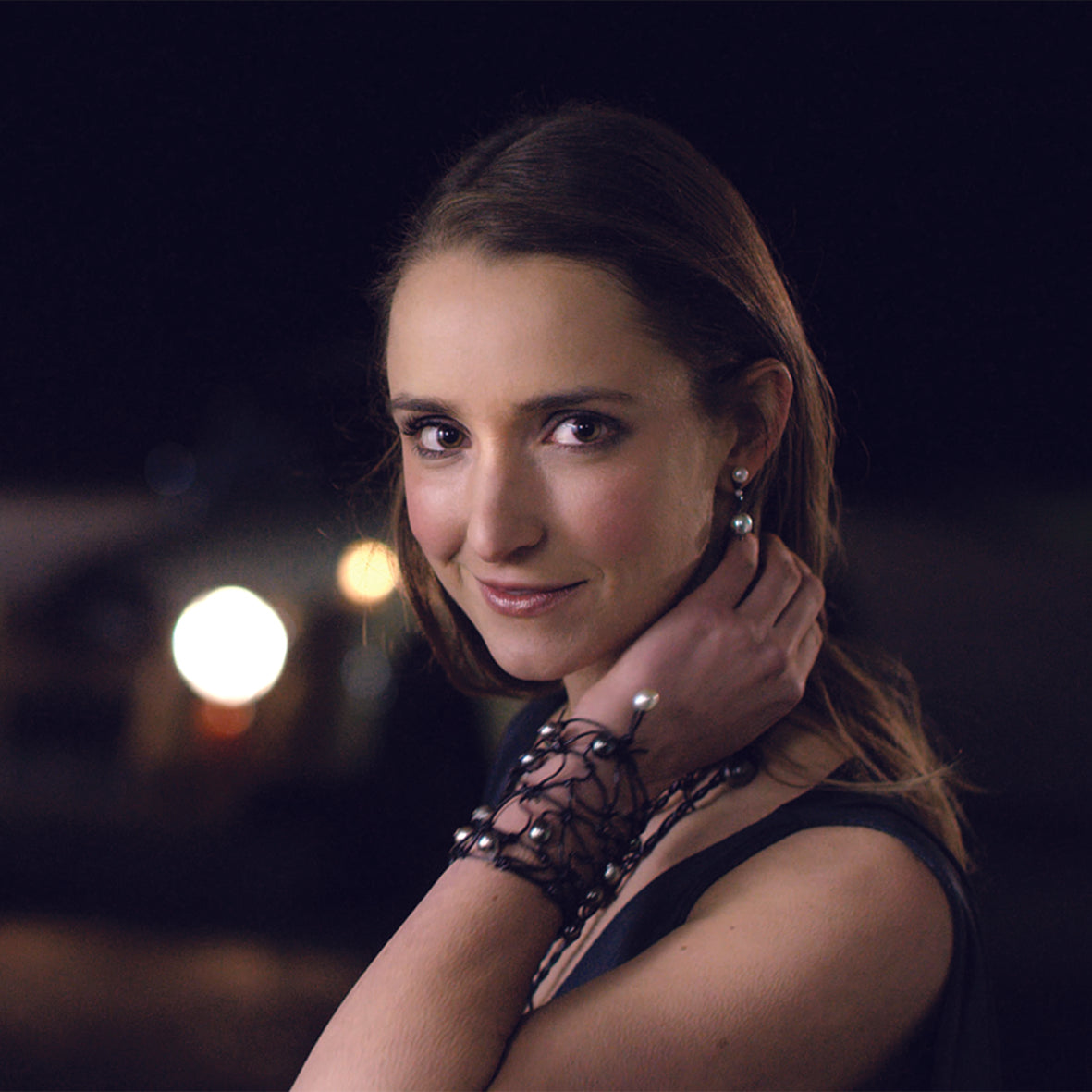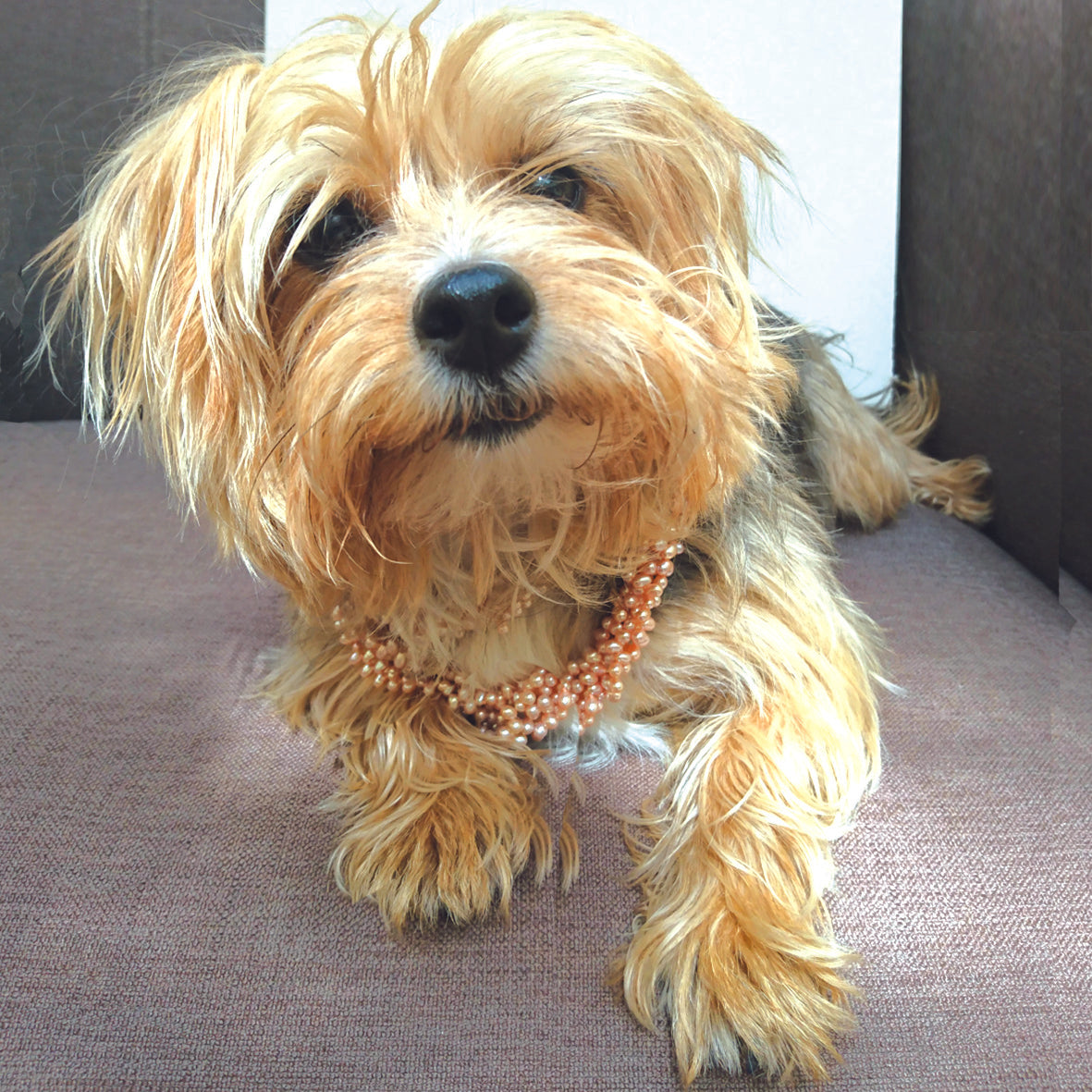
When it comes to choosing pearls, there are a number of elements that go into that choice. The lustre of a pearl is possibly the most important attribute. A pearl with high lustre seems to glow from within, and will light up your face, thereby subtly enhancing your natural beauty.
A pearl’s lustre therefore impacts the overall appeal and luminescence of any pearl jewellery design, and also has a significant impact on the jewellery’s value.
How do pearls get their lustre?
Pearls are formed when an irritant, like coral or grit, enters a mollusc, like an oyster or mussel. The mollusc will cover this irritant with epithelial cells, forming a pearl sac. Over time, epithelial cells of the pearl sac deposit layers upon layers of nacre. These layers of nacre eventually form the pearl.
The thickness of a pearl’s nacre layers determines its lustre. Especially when each individual layer is thin, as this means there is more light refraction, giving the pearl greater lustre. When more light is reflected onto the pearl’s surface, it gives a more defined lustre as well as a more intense glow. Pearls with a thicker layer of nacre typically last longer and are therefore more expensive.
How is pearl lustre measured?
A pearl’s lustre is measured according to three key elements:
- The degree of light reflecting off the pearl’s surface
- The sharpness of the pearl’s reflection
- The refraction of the light through the pearl (higher refraction means the pearls have a more intense inner glow, better illuminating the wearer).
Pearl lustre is measured according to a spectrum. The grades of lustre assigned to pearls are judged on the following grading system: poor, medium, high, very high, very high to excellent, and excellent.
Pearls with a poor to medium lustre will have weak, diffused reflections and their surface may appear somewhat chalky. Alternatively, highly lustrous pearls with an excellent grading will feature a bright, sharp, vivid reflection – you may even be able to see yourself in their surface.
What types of pearl have the most lustre?
Akoya Pearls
Farmed in the cold waters of the Pacific Ocean, Akoya Pearls are the most lustrous. Famous for their crystalline surface, akoya pearls have an exceptional refractive and reflective ability, giving them a mirror-like or ‘ball-bearing’ lustre. This lustre is typically sharp and crisp, with little to no hazing.
The lustre of Akoya Pearls is typically graded anywhere from ‘excellent’ to ‘very high’.
Choose an Akoya Pearl necklace with matching white Akoya Pearl studs if you’re looking for a pearl with exceptional lustre that will subtly enhance your natural beauty.
If you’d like to know more about Akoya Pearls, watch as pearl expert, Chrissie Douglas, talks about the fascinating secrets behind their value, rarity, and style tips:
Tahitian Pearls
Produced in black lipped oysters, Tahitian Pearls are typically formed over a period of two years. They come in colours ranging from grey and black through to tones of peacock green and aubergine, but are the only naturally black pearls.
Tahitian Pearls usually have thick nacre, which helps to create the unique saturation of colours seen in Tahitian Pearl jewellery. However, the thicker nacre can slow the transmission of light reflecting through the pearl, meaning that Tahitian Pearls have a slightly softer, satiny lustre when compared to an Akoya Pearls.
With that said, designs like our silver-black Tahitian Pearl necklace still have a highly reflective, sharp, bright reflection.
Choose a Tahitian Pearl design like our black Tahitian Pearl and diamond gold-curve earrings for a sophisticated evening look. Wear solo or with a Tahitian Pearl pendant, like our black Tahitian Pearl, green tsavorite and diamond design, to add multiple colour tones to your look.
South Sea Pearls
Much like Tahitian Pearls, South Sea Pearls are known for having very thick layers of nacre. This nacre creates the luminescent tones of South Sea Pearl jewellery, ranging from the amber golds of designs like our gold South Sea Pearl necklace to the cool silvers of our white South Sea Pearl and diamond ‘tsarina’ drop earrings.
This thick nacre also slows the refraction of light through South Sea Pearls, giving them their soft inner glow and satiny luminescence. South Sea Pearls have a less crisp lustre than Akoya Pearls but a richer play of colour and glow, comparable with Tahitian Pearls. The thick nacre of both Tahitian and South Sea Pearls also gives these gems their durability and high value.
A design like our white Akoya and South Sea Pearl necklace with diamond leaf centrepiece and matching earrings make for perfect bridal pearl jewellery, adding a regal glamour and soft luminescence to your special day.
Want to learn more about South Sea Pearls? Unravel the mysteries behind their exclusivity and allure in this video:
Freshwater Pearls
Of these four types of pearl, Freshwater Pearls have the lowest lustre – but advancements in pearl cultivation means you can find more recent Freshwater Pearl jewellery with improved lustre.
The lustre of Freshwater Pearl designs like our white Freshwater Pearl medium single strand necklace will be softer and less crisp than comparable Akoya Pearl jewellery designs. However, the glow of freshwater pearls is still soft, silky, and sheen-like.
What’s more, Freshwater Pearl jewellery is highly durable and a more affordable option. Mix and match pearl pendants like our white Freshwater Pearl ‘simple’ design with pearl stud earrings, either in matching tones or complementary colours.
You can learn more about the origins of Freshwater Pearls in this video.Delve into the fascinating process of how these pearls are formed within freshwater mussels, unveiling the secrets behind their creation.
How does pearl lustre impact its value?
There are a number of factors that determine a pearl’s overall value. These include the pearl’s size, shape, colour, surface quality and lustre. Lustre is a highly important variable in determining the pearl’s value. If the other value factors are all the same for one pearl, a higher lustre will translate to a higher value.
Find a pearl design to enhance your natural beauty
Book into a personal consultation with Coleman Douglas Pearls and find a piece of pearl jewellery to enhance your natural beauty. As pearl experts since 1989, we can help you to feel beautifully confident in perfectly matched pearls, choosing a lustrous design that will complement your unique features.



















